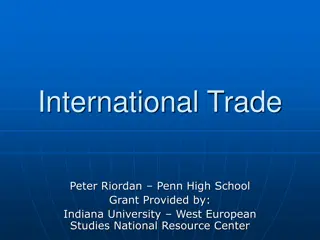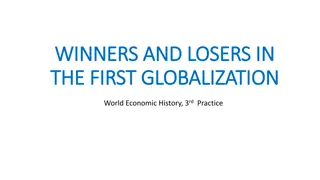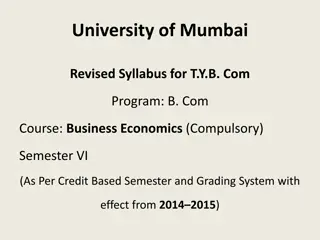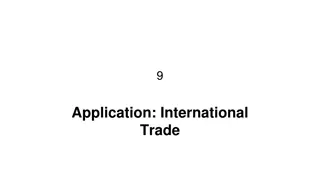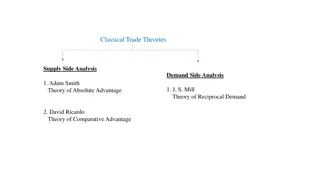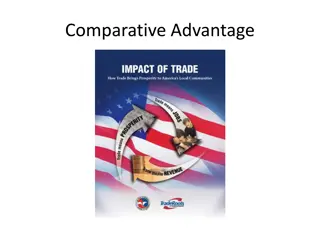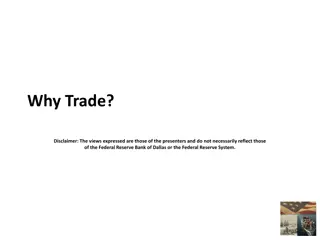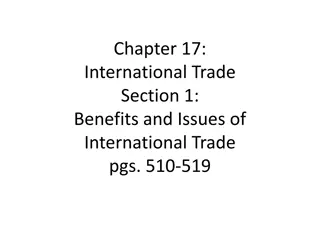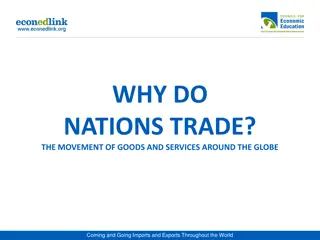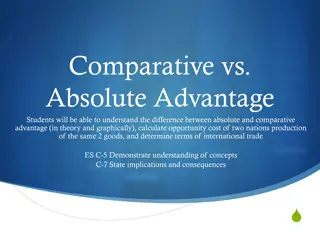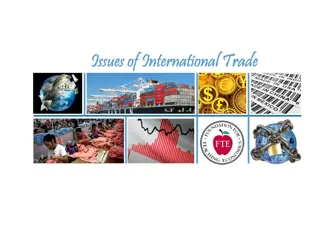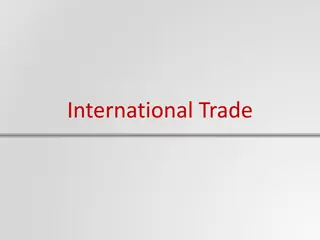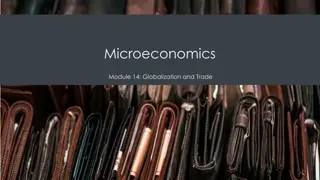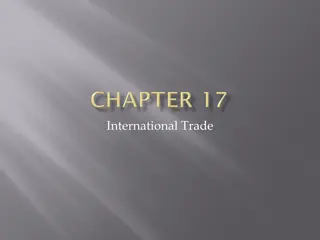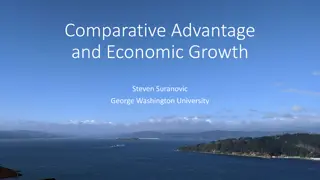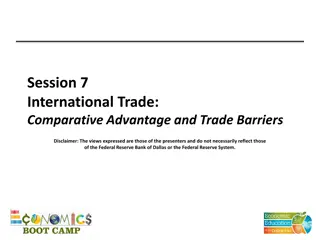Comparative Advantage in International Trade
Each country benefits from specializing in the production of goods with comparative advantage, leading to optimal resource utilization through trade. Ricardo's theory of comparative cost illustrates how countries can benefit from specialization based on efficiency differences.
Download Presentation

Please find below an Image/Link to download the presentation.
The content on the website is provided AS IS for your information and personal use only. It may not be sold, licensed, or shared on other websites without obtaining consent from the author.If you encounter any issues during the download, it is possible that the publisher has removed the file from their server.
You are allowed to download the files provided on this website for personal or commercial use, subject to the condition that they are used lawfully. All files are the property of their respective owners.
The content on the website is provided AS IS for your information and personal use only. It may not be sold, licensed, or shared on other websites without obtaining consent from the author.
E N D
Presentation Transcript
It will be to the advantage of each country as well as of the world as a whole that each country specialises in the production of those commodities for which it has comparative advantage. In this way the productive resources of the country will be optimally utilised. It is worth mentioning that specialisation necessitates trade or exchange of goods with other countries.
In order to simplify our analysis, we make the following assumptions: 1. There are no transport costs between the two countries. 2. Conditions of perfect competition prevail in both countries. 3. Labour is the only resource of production and prices of products are equal to their relative labour costs. 4. There is free trade between the countries.
let us illustrate the theory of comparative cost (or comparative advantage) with a numerical example. Taking two countries, two commodities model as used by Ricardo we give in table labour requirements per unit of cloth and wheat in the U.S.A. and India. Man-hours Requried to Produce One Unit of Wheat and Cloth
It will be seen from Table that U.S.A. is more efficient (or has absolute advantage) in the production of both wheat and cloth. To produce one unit of wheat the U.S.A. requires 3 man-hours, while India requires 12 man-hours. In case of cloth, to produce one unit of it 6 hours of labour are needed in the USA, while 9 hours are needed in India. It is thus evident that the U.S.A. is more efficient in the production of both the commodities as it produces them at a lower labour cost than India. That is, U.S.A. has an absolute advantage in the production of both the commodities. However, Ricardo argued that the two countries can still gain from specializing and trading between them if they produce according to their comparative advantage.
It will be seen from above table that the U.S.A. is four times more efficient in the production of wheat as compared to India, while its efficiency in the production of cloth is 1.5 times greater than India. Thus, while U.S.A. has absolute advantage in the production of both wheat and cloth, it has a comparative advantage in the produc- tion of wheat. On the other hand, India is less efficient in the production of both wheat and cloth, its inefficiency is comparatively less in cloth. India is said to have comparative advantage in the production of cloth. Both the countries will be better off if the U.S.A. specialises in the production of wheat and exports it to India for import of cloth and India specialises in the production of cloth and exports it to the U.S.A. and import wheat from it.


